While there’s fortunately not a ton of work required to keep your RV’s braking system in shape, understanding the basics of brake, bearing, and axle maintenance will help prevent potential issues. It’s important to do periodic inspections to know what is happening to the brakes and inside the hubs. We’ll go over a few different procedures depending on your type of RV, such as trailers, tow vehicles, and motorhomes.
Trailer Maintenance
1. Brakes
Typically, many trailers have electric brakes designed into the hub of the axle that are activated by a brake controller inside the tow vehicle as the brake pedal is applied. Most larger trucks will have a brake controller built into the dash and electrical system while smaller units will need one installed.
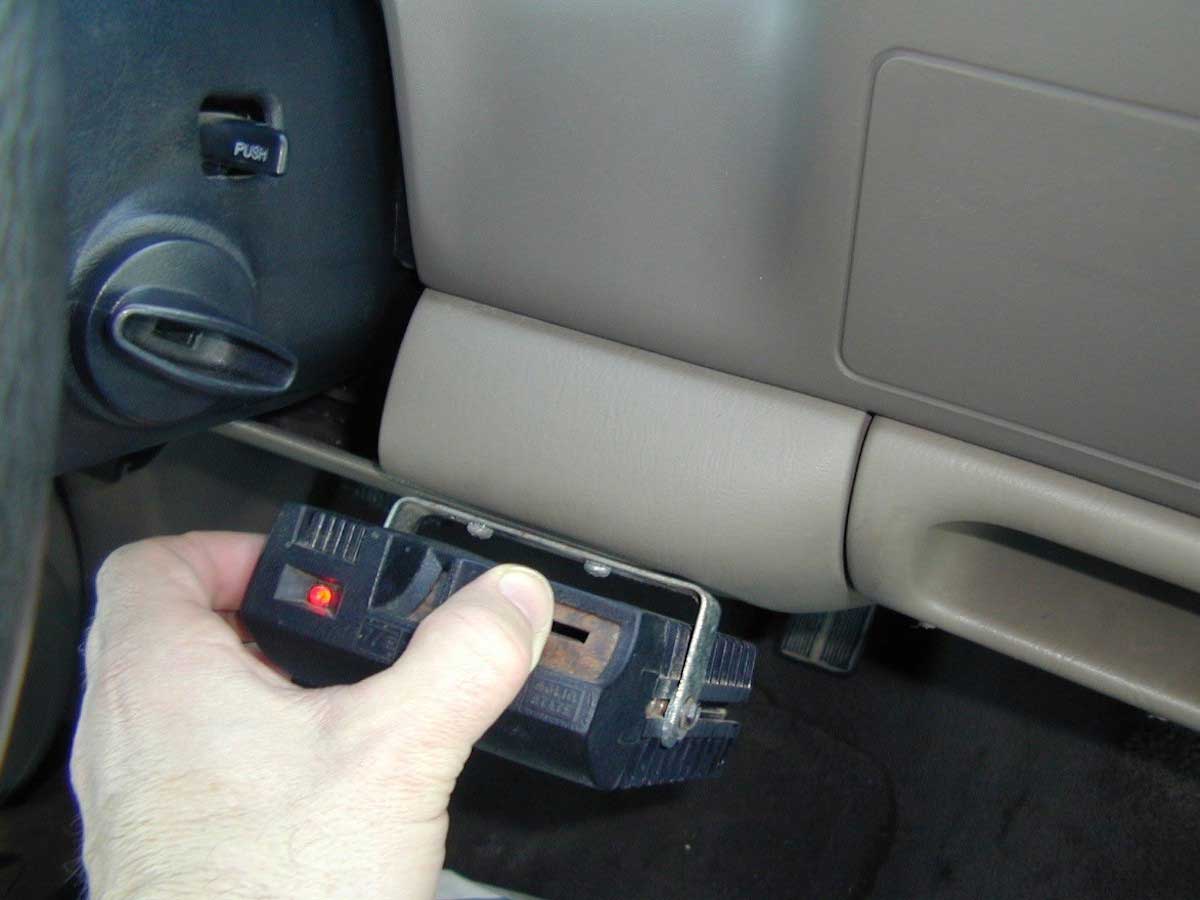
Trailer brakes should be visually checked at least once a year. Spring is a good time to give them a check and make sure they’re still operating properly after a long winter.
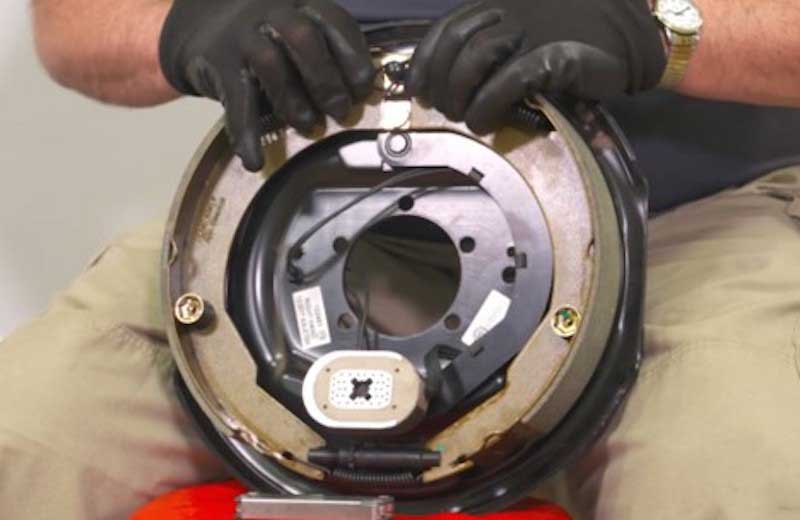
Most trailer brakes will have a magnet and brake pads that push against the drum. First, inspect the brake pad to ensure there is enough material still available to stop the rig. Many axle manufacturers such as Dexter recommend replacing the shoes if they are less than 1/16” thick.
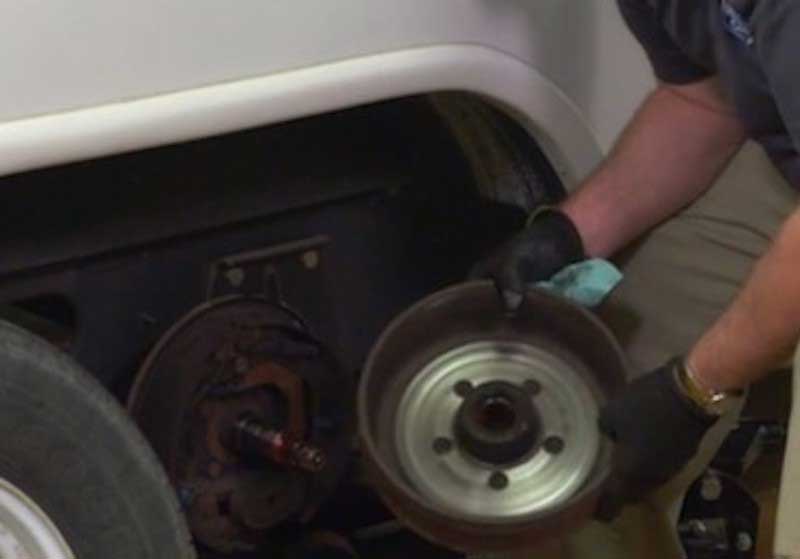
The drum surface should also be inspected for scratches or grooves. If there are slight grooves, the drums can be “turned,” which is a process of grinding or cutting the metal smooth. However, this can only be done to a certain thickness and needs to be done by a professional.
Since this process requires some DIY skills, tools, and a place to work on your rig, the average RVer will probably just take it to a service center. To help you decide if you want to tackle the process yourself, check out this video.
What you can do on a regular basis is check the braking resistance and manually apply the trailer brakes with the brake controller a few times a year. Start by driving with the trailer connected at a speed of 10 miles per hour in an open parking lot. Apply the brake controller manually without pressing the tow vehicle brake. You should feel resistance, and the higher you set the controller, the more resistance there should be.
If you don’t feel resistance, you can check to see if there is electrical power getting to the magnet in the hub. This can be done with a multimeter or break force meter, but if you don’t have either of those, here’s a bit of a hack. Place a compass next to the hub and apply the brake of the tow vehicle as it is connected to the trailer. Watch for the compass to spin. If the magnet is energized, the compass will go wild. If not, there is no power going to the magnet.
2. Bearings
Over the years, there have been great advances in bearings used in trailers as well as the way we lubricate them. Dexter has a great product called EZ Lube with a grease fitting on the outside that channels grease through the shaft to the inner bearing and pushes it through to the outer bearing. This applies new grease and pushes out any contaminated or overheated grease. However, they do still recommend repacking the bearing every 12 months or 12,000 miles.
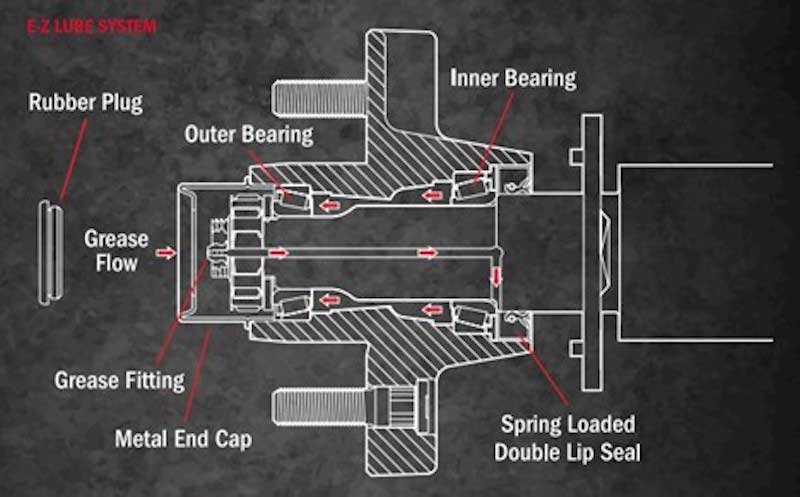
The main thing to remember is that as the wheels turn going down the road, the bearings are exposed to extreme heat and friction and they must be lubricated no matter what type you have. Periodic inspection is a must, and good practice is to use an infrared sensor to check the temperature and understand what is happening behind the hub.
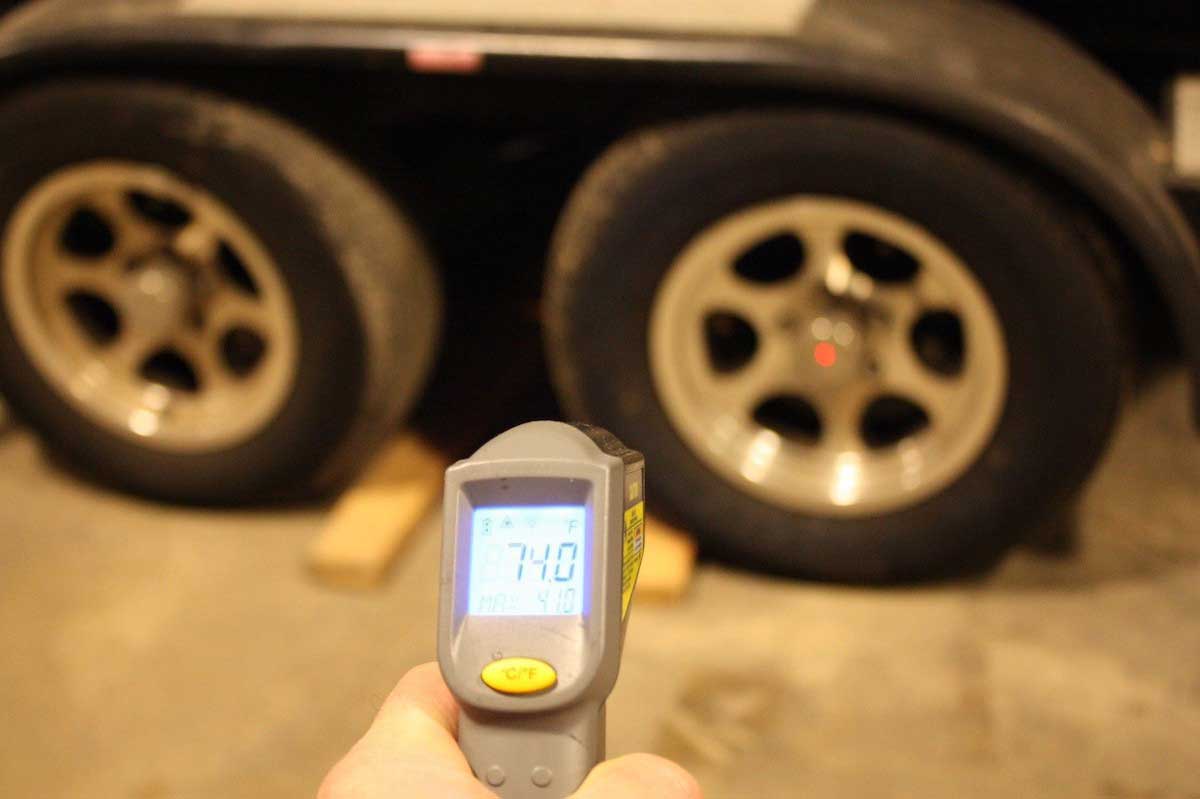
It is not uncommon to see temperatures reading 20-30° higher than ambient. However, if there is a spike, you know the bearings are starting to get dry and you’ll need to have them looked at before you find yourself on the side of the road!
3. Axle Maintenance
There is virtually no maintenance required on a trailer axle, but there are a few important weight considerations and jacking procedures. Axles have specific weight ratings known as Gross Axle Weight Rating (GAWR). This rating tells you the maximum weight that an individual axle can hold. It’s important to have your rig weighed to ensure you are not exceeding the Gross Axle Weight Rating or Gross Vehicle Weight Rating (GVWR). Otherwise, the excess weight can make the axle bend and cause issues with tire wear and braking.
Most axle manufacturers do not recommend placing a jack on the axle or braces to fix or replace a tire as it could bend the axle. RV manufacturers have specified jack points on the frame for this purpose.
Tow Vehicle Brakes
Most trucks today have sealed bearings that cannot be lubricated or visually inspected. Instead, they need to be replaced when they start to grind. Typically, this is at a very high mileage, but you do need to check the brakes occasionally, and there are quite a few opinions on how often. Some say every six months while others say you should check at every oil change or tire rotation. It all depends on the amount of driving/towing and the weight or severity of braking.
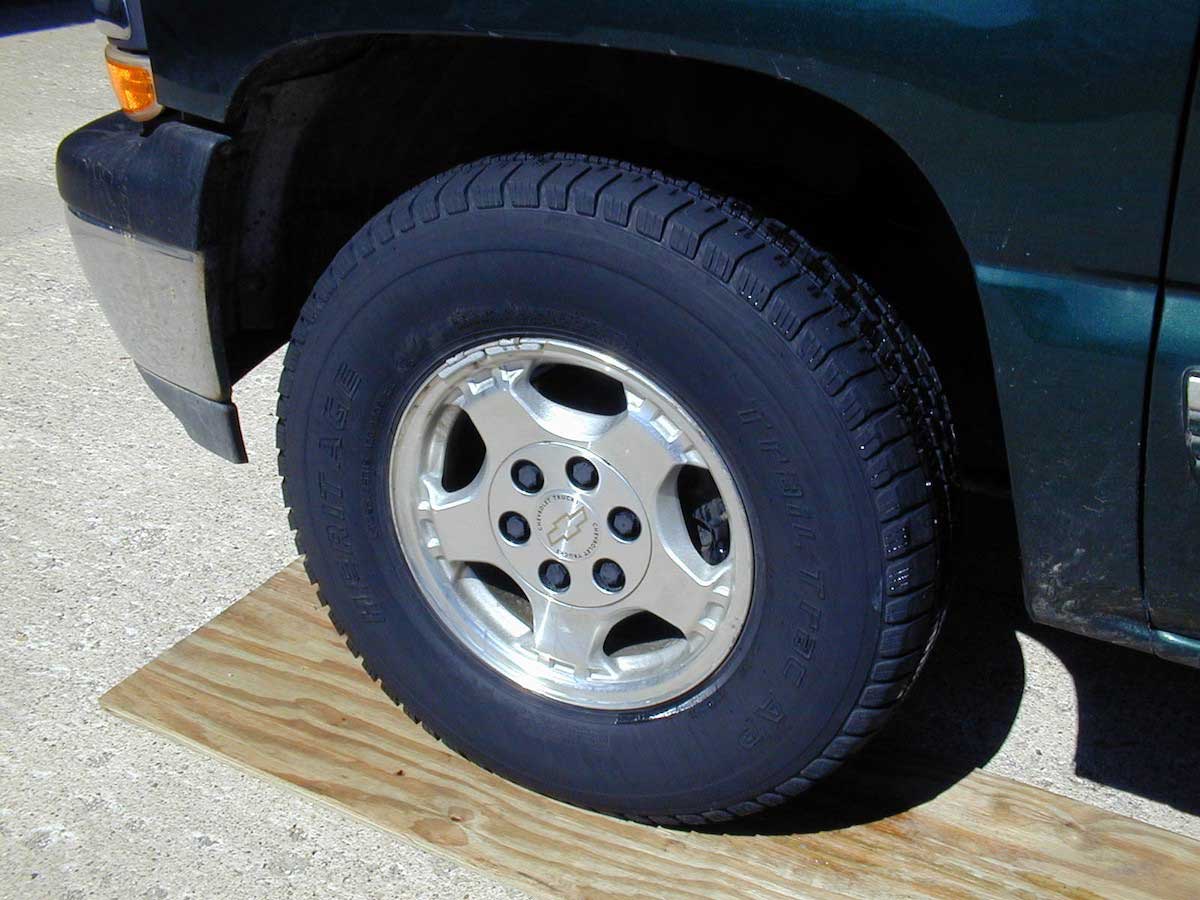
Most tow vehicle brake systems have a wear indicator that will start to squeal as the pads get low. You can also see an accumulation of brown brake pad dust on the rim. Less than ¼” of pad is typically when they should be replaced. It’s also important to inspect the rotor for grooves.
Most truck manufacturers recommend changing brake fluid every three years as condensation can build up in the system. This is not an easy procedure, but a brake fluid tester like this one can help determine the moisture level and quality of brake fluid.
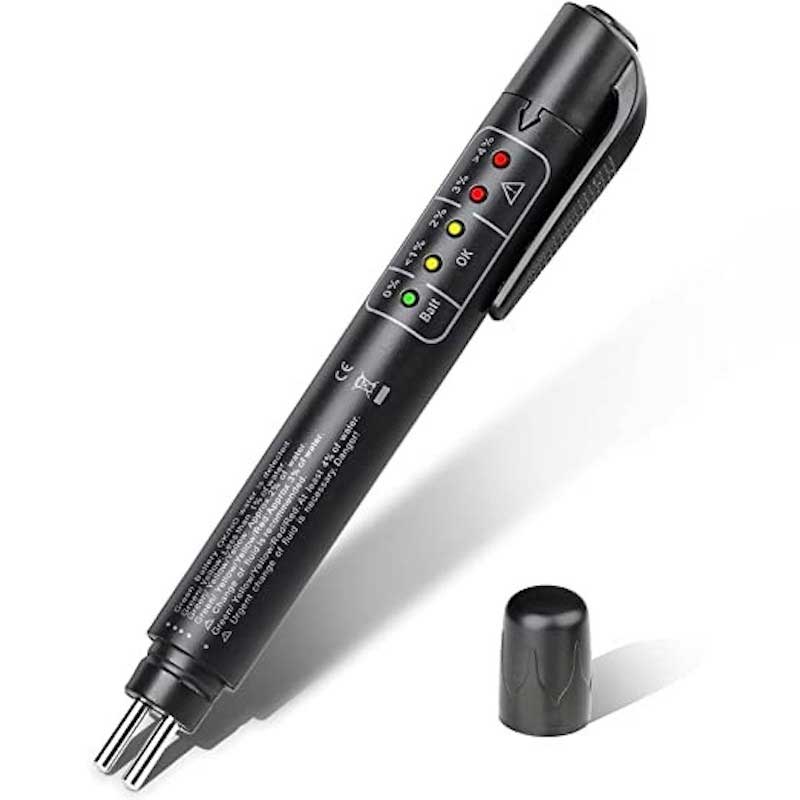
Motorhome Brakes
Motorized vehicles utilize a hydraulic fluid braking system that pushes the brake fluid through tubes to extend the brake pads to the rotors at the individual wheel positions. Larger units such as “diesel pushers” have air braking systems. It is important to inspect the pads for appropriate and safe thickness yearly.
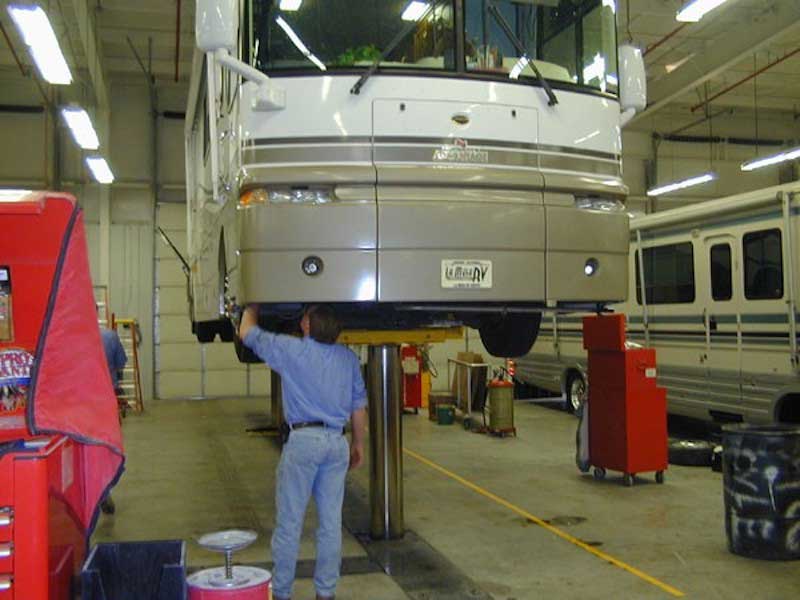
Most chassis manufacturers recommend checking the braking system once a year. As you can see above, it’s not an easy DIY job! Also, most larger chassis manufacturers such as the Class A gas and diesel models do not recommend rotating tires unless there is extensive wear, so once a year is a better schedule.
These also have sealed bearings so there is no inspection or lubrication recommendation for them.
Check your chassis manufacturer’s recommended maintenance schedule for specific details regarding your brakes and bearings.

Always good to re- adjust The brakes on a TT after the first trip away. After replacing the brakes Check the adjustment by jacking up the wheels and give them a spin and you should have a slight drag and rubbing noise as the wheel is spun .
I've only owned my coach for a couple of months. A few weeks after purchase, I had a full chassis service by a Cummins service center. It included all oil changed, filters, chassis lubrication, etc. We made a trip from VA to SC (Myrtle Beach) not all that far. Once arriving I noticed at the left from lug nut covers (probably emanating more from the axle cover than the actual lug nuts), oil residue streaks from lug nut covers (or axle cover) outward to the lip of the rim. I cleaned it off and thought that possibly the service center had over lubed something near that area. We came home and did not take anymore trips until last week when we took a very short trip to VA Beach and returned a week later (total road time 6 hrs). I had washed the coach including wheels prior to departure. Upon return, I've discover the same streaks. These are not heavily coated, wet oil streaks, but streaks nonetheless. What is your opinion? Bearing seal shot? Or the hub cover gasket?
What type of roofing material does this have? I cannot visually tell from the outside. Also, good note about the jack points. I will be doing a lot of traveling this fall and want to check everything.
I recently took my trailer in for service when I received a call from my service advisor that the service technecian was amazed that the rear attachments from the Correct Track had failed and my rear axle was no longer attached and had not fallen off. Has anyone experienced a similar problem? I have had my wheel bearings andaxles packed every year. Picutres of the failure are available.
Any information on this RV would be greatly appreciated. Wiring diagram, leveling system, slide outs, etc. The large slide out malfunctioned due to dry rot and I am unsure where some of the parts belong (large galvanized plate fell out & I can't find where it went). Antenna not working. Can new dish satellite be connected to original coax cables? How to replace if not. Etc...
Good tip on the brake fluid water content sensor. They work great and are inexpensive.
Jacking point on RV for brake maintenance.